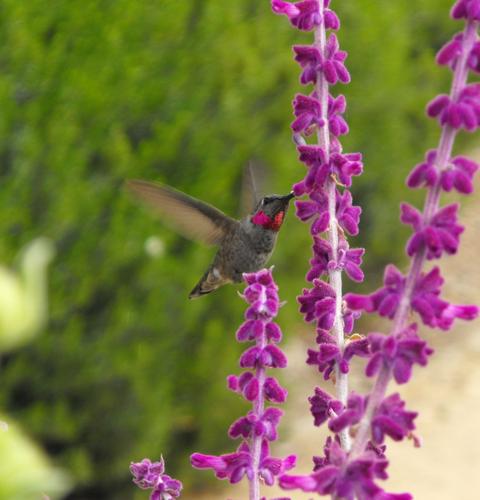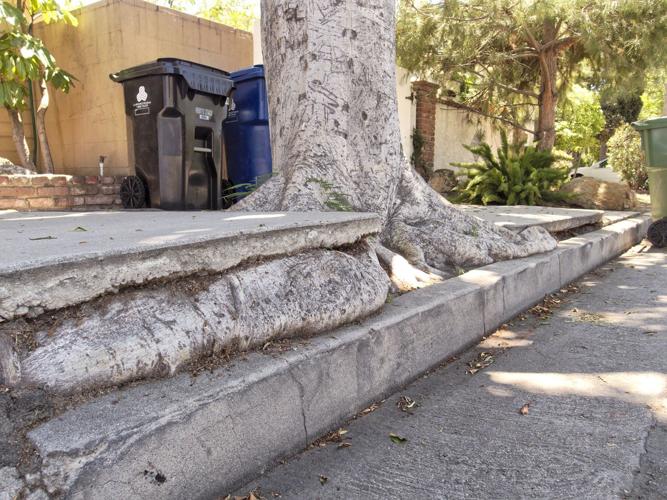This is usually the time to make resolutions for the New Year.
It’s not that things change so much in a new year that we are required to react. It’s more about our determination to be better or do better than before.
In the world of gardening and landscaping this can mean everything from conserving our increasingly valuable water to growing more of our own food to killing fewer plants and beneficial insects by accident.
Having the responsibility to answer questions about such things for the last 18 years has taught me a lot. While there is no way to put it all down here, I am hoping my top five, all time, desert island, things to do in your landscape will be of some help.
Right plant, right place
This old adage is always important no matter what your goals are or where you live. It is especially important when you live in an area of extreme environmental conditions. Consider native plants and well-adapted non-native plants when selecting what will go into your landscape. Trying to grow something that requires less heat or cold, more acidic soil, and/or more water than is reasonable to expect in a desert is asking for trouble. Sure you can grow some things in a container with special soil, move containers inside or out depending on the season, or plan on a regular iron supplement for plants that can’t extract their own from the soil. It’s all about what you are prepared to do for your plants. There are quite a few plants to choose from that do well here without all that extra work and they don’t all have to be cacti and succulents. Examples of these can be seen at local nurseries such as the Tucson Botanical Gardens, Tohono Chul Park, the University of Arizona Campus Arboretum, The Green Valley Gardeners’ Arid Garden and Desert Meadows Park, and the Pima County Cooperative Extension demonstration gardens. Keep in mind that just because a store is selling it here doesn’t mean it will grow well here or not be invasive. It’s best to ask questions and do a little research to be sure before you buy.
Factor in the maintenance
No matter which plants you select, there will be some associated maintenance required to keep your plants looking nice and remaining healthy. Understanding what plants require and what you are willing and able to provide are the keys to a low stress relationship with your landscape. Some plants are going to require pruning, most will require irrigation, and some might be more aggressive than you like and need to be cut back or weeded to be kept in check. The point is you need to allow for this time and effort. If it is you doing the work, are you up for working in temperature extremes? Do you need to buy tools and other supplies to do the work? Do you know how to do the work and if not, can you find some instructions or take a class on how to do it? Are you going to hire someone to do the work? How often does it need to be done and how much will that cost? Of course, the University of Arizona and other land grant institutions in the West are great sources of information on how and there are classes offered there through Cooperative Extension as well as at local nurseries, botanical gardens, community colleges, etc. Many of them are advertised in this newspaper.
Water
Along with light, of which we have no shortage, water is the limiting factor in landscaping and gardening. Water has been in short supply here long before we humans arrived and last time I checked, we are still arriving and the water is becoming scarcer. We obviously live in a desert and according to the climate scientists it is going to get warmer and drier in the coming years. The trend in recent times is that each year is drier and hotter that the last so we should be prepared to keep up with the water needs of our plants as best we can. Drip irrigation can be the most efficient method we have for keeping plants watered. The trick is to know the approximate needs for our plants, plant them in zones such that plants with like needs are closer together than those that differ, and be flexible enough to change the amount of water we are using based on the seasons and how much rain we receive. There are a number of publications on how to set up drip irrigation and classes offered for further instruction through the University of Arizona Cooperative Extension. The publication Landscape Watering by the Numbers is a good place to start to understand how to blend our irrigation with our plants.
Begin with the end in mind
Planning is usually a good idea and having an understanding of how you want your landscape or garden to look in the end is helpful in reducing unwanted problems and extra maintenance. The mature size of trees and shrubs is well known so there is no good reason to plant something that will ultimately be too large for a specific area. Yes, the tiny plants spaced properly look a bit odd when you first plant them but they will grow and fill in the spaces as advertised if we are patient and take care of them. The associated problems and maintenance with trees and shrubs planted too close to sidewalks, patios, buildings, and each other end up being expensive, time-consuming, and unnecessary. There are plenty of choices in the plant world that will fit any space and most plant tags and reference material on the Internet and in publications describe exactly what to expect sizewise.
Plan for someone to eat your plants
Every plant has associated animals that want to eat them. You might be one of these animals. Of course, that is more of a planned eating rather than a pest problem but a good one to consider. We have the opportunity to plant edible plants and if you want more from your landscape than pretty flowers and a screen for your neighbor’s RV, think about what you like to eat. The choices of food plants in our area are many. Organizations like Linking Edible Arizona Forests (LEAF) and the Community Gardens of Tucson are working to help people learn more about food plants and how to grow them. When it comes to other animals eating our plants, these are not always welcome. Pest problems are inevitable and how we plan for them determines, in part, how we deal with them. Knowing the potential pest problems for plants and what available resources we have to deal with them are the best ways to prepare. Then when problems occur we are able to react quickly if needed. In some situations we might require fencing or physical removal of pests and in others we might use a pesticide, organic or otherwise. In some cases, we are simply unable to manage the pests and must decide whether we simply plant more so there is enough for everyone or decide to try a different plant instead. There are occasions when sharing plants with animals is the goal rather than the problem. We often plant for butterflies, bees, and other insects that are considered attractive or beneficial in some other way. Hummingbirds and other birds are also a source of joy that we can bring to our landscapes by simply planting food plants for them. In any case, a little research on what various animals eat will help plan a garden that supports the habitat of our favorite wildlife or us if that is what we desire.
So there you have it, in a nutshell. As always, you can feel free to remind me about something important I left out or ask me for more details about these things I mentioned. There is always something new to learn and I look forward to new knowledge every day and your interesting questions whenever I receive them. I hope everyone has a happy New Year and exceeds all of your hopes and dreams for 2017.





